 Safety certifications can have positive effects on both individuals as well as organizations. The increased pay that comes with a safety certificate can be beneficial to individuals, while businesses have more efficient employees who have been educated on the best practices.
Safety certifications can have positive effects on both individuals as well as organizations. The increased pay that comes with a safety certificate can be beneficial to individuals, while businesses have more efficient employees who have been educated on the best practices.It is essential to study the different safety certificates and pick one that best suits your career goals and your experiences. Get ready for the test by using the help of a study guide or course.
Certification Requirements
A safety certificate is an official document that demonstrates to employers that you have the required knowledge and training on occupational health and safety. It will help you advance your career, demonstrate your dedication to your profession and can lead to higher wages.
You can earn a safety certificate through a series courses that focus on specific aspects of OSH. Many of these courses are offered online and can be completed wherever you have an internet connection. Some courses are only offered through accredited institutions, such as the American Society of Safety Engineers.
Some safety certificates require a hands-on test to prove that you are able to handle safety situations. This is a part of the training classes you take to pass the exam. The practical tests vary in length from four days to only one day, based on the field you work in and the safety certification you choose.
For instance, if you work in the oil or gas industry and are responsible for handling hydrogen sulfur (H2S) you must complete a H2S safety education program to obtain a H2S safety certificate. These programs will educate you about the chemical that is dangerous and provide you with the knowledge to handle situations where you are exposed to it on the job.
Other safety certificates offer various paths to develop your career. For instance the Associate Safety Professional (ASP) is an entry-level credential that assists novice safety professionals build their EHS capabilities. This is in addition to their normal duties. You can also take the route of becoming a Certified Safety Professional (CSP), which is the next level up for experienced safety professionals. This requires a bachelor's degree, or experience that is equivalent to it, and the completion of the CSP test.
Safety professionals with specialized safety knowledge can help reduce a workplace's risk and improve its reputation and social standing. They can play a crucial role, such as creating safety guidelines and procedures, and then enforcing these. They also conduct risk assessments and help promote an environment that is positive for employees. These professionals are typically employed by organizations that value a safe work environment.
Maintenance points to be used for certification
Many safety professionals hold multiple certifications each of which requires a certain amount of continuing education and maintenance in order to stay current. These certifications are beneficial to the person who holds them and the business. They can help individuals keep up-to-date with industry standards and theories. This can lead to higher-level jobs and salary increases. Employers who require their employees to be certified benefit from the consistency of training and work practices, greater confidence from customers, employees' adherence to ethical standards and a standard for project evaluations, salary increases and promotion road maps.
Each certification has its own set of requirements to keep the credential. Each has a particular number of Certification Maintenance Points that must be earned over the course of five years. CMPs can earn you points in many ways, such as participating in professional training programs or writing articles for publications and teaching safety classes.
A CSMP for instance, can earn two CMPs each year by publishing a safety related article in a peer reviewed journal. Participating in seminars and conferences related to safety can also earn you CMPs. Each day of participation earns you 1 CMP. Taking and passing a certification exam can earn you 2 CMPs every year.
The system safety analysis process, or SSA can be carried out by the design agency or by aviation regulatory authorities such as the FAA in the United States and EASA in Europe. It involves identifying the potential failure modes of an aircraft type and their effects on the system. It also assesses the risk involved with each of these failure modes by assessing the severity and likelihood of their occurrence.
The CSP is then eligible for recertification after the SSA is completed. This involves submitting proof of professional-level work experience, fulfilling education requirements and completing a competency test. The application process can take up to 90 days. Once the CSP recertify, they can utilize the designation to demonstrate their competence and knowledge in the field aviation safety management. They can include their certification to both their LinkedIn profile and resume.
Procedures for Renewal of Certification
Maintaining compliance with regulations requires that safety certifications be kept up-to date. The process can vary depending on the type of certificate being used, but all renewals involve verifying compliance and updating documentation to ensure that safety measures are working. This is particularly important for fire safety certificates, as a well-maintained certification can help reduce the risk of injury or loss due to accidents or fire.
ServSafe certifications must be renewed every four years to ensure they are valid for a period of four years. Although the recertifying process isn't as intense as the initial training but it's still necessary to renew your certification in time to avoid interruptions to your work or penalties by regulatory agencies.
Renewing the ServSafe certificate is also a time to study new food safety guidelines and trends. There have been many changes in the industry including recent outbreaks and online food delivery services. Staying up-to-date with these latest developments will ensure that you're equipped to handle a variety of foods and prepare them in the proper manner.
When it comes to fire safety certificates renewal, the process involves a thorough inspection of your property and verifying that all fire safety equipment is in working condition. You will need to provide complete records of fire safety inspections and maintenance as well as employee training. You'll need to test all smoke detectors and update your fire escape plan. In addition, you'll have to pay any applicable charges.
In certain situations, you might have to contact the fire department before making your renewal application. They can provide you with specific instructions on what steps to take and what documents required to complete the renewal process.
Idealy, you should start working on your renewal application at least 90 days before the date when it expires. Based on your schedule, you might be able to complete the entire renewal process within this time frame. You can then focus on preparing for your next project or job that involves safety. A safety certificate can give your business an advantage over its competitors and demonstrate that you are committed to maintaining the highest standards of security in the workplace.
Maintenance Activities to be Certifiable
Safety certificates can help employees develop the skills needed to identify risks and hazards in their workplaces, which help to prevent injuries and increase job satisfaction. They can also implement strategies to reduce absenteeism and sick time, helping teams to stay focused on their goals. Additionally, safety professionals can spot and limit the impact of potential accidents, which ultimately reduces the cost of insurance for businesses.
Safety professionals must adhere strictly to the requirements for maintenance set forth by their respective accreditation bodies to maintain their certifications. These could include continuing education or training courses, as well as seminars. They also need to demonstrate a certain level of knowledge and proficiency in their respective fields for instance, by taking tests or submitting examples of work they've completed.
For safety professionals the maintenance tasks are vital to ensure they have a thorough understanding of current standards as well as the latest trends legislation, laws and the best practices in their fields. It's also a way to stay abreast of developments in the industry, so that they can remain at the top of their field and provide the best service to their clients.
This safety certification is aimed for directors, executives managers, supervisors and superintendents who oversee the operation. It covers a broad range of topics such as workplace inspections, emergency response hazards, hazard assessments and control records-keeping safety management systems, and investigations into accidents.
 This kind of certification can help employees feel valued by employers, which increases their motivation to work at their best at work. This could lead to increased productivity and fewer claims for compensation for injuries. This certification makes it easier for an organisation to adhere to regulations and avoid penalties. These benefits are well worth the effort to get a safety certification.
This kind of certification can help employees feel valued by employers, which increases their motivation to work at their best at work. This could lead to increased productivity and fewer claims for compensation for injuries. This certification makes it easier for an organisation to adhere to regulations and avoid penalties. These benefits are well worth the effort to get a safety certification.







